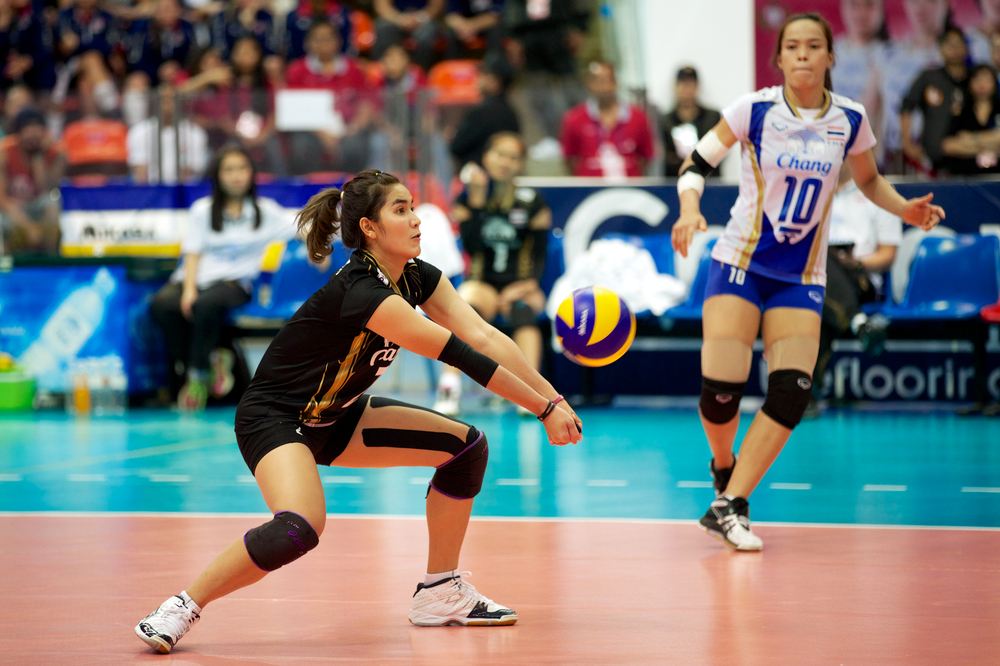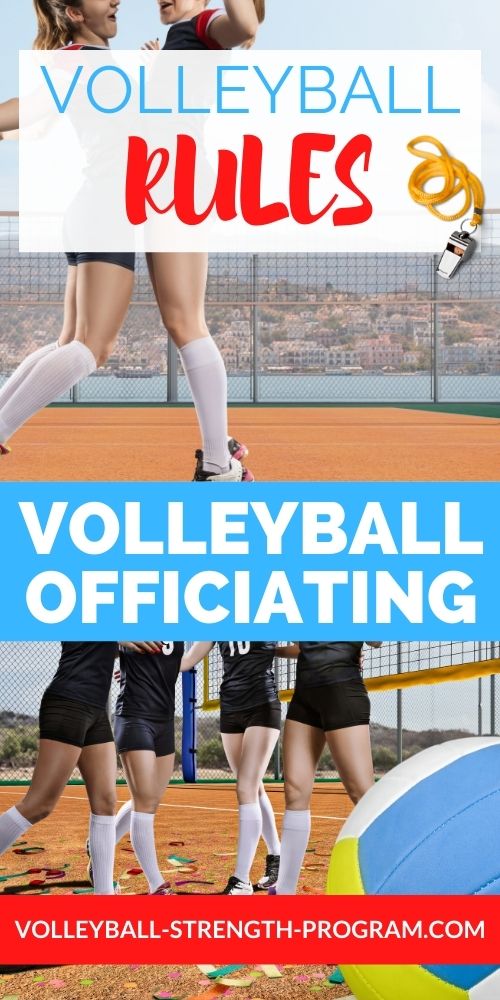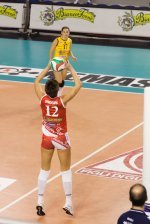Basic Volleyball Rules
Understanding basic volleyball rules will help you succeed in volleyball. Maybe you're coach trying to learn the game and need help understanding what the referee calls and how to teach your players the skills so your players won't be whistled for an illegal hit. Or maybe you're a parent that is frustrated with the officiating and unsure about what the rules are. Or maybe you are a player looking to get an edge over the competition by using the rules to your advantage. Regardless of whether you are a parent, player, or coach, this page can help you take your understanding of the game to a higher level.
Learning Basic Volleyball Rules
It's important to know the basic rules of volleyball. If you don't know the rules, volleyball can be a very frustrating experience. For example, the referee could make a call that you think is clearly wrong, when in fact, it's you that doesn't know the rules.
The following are some basic rules of volleyball that everyone involved needs to understand.

Double Contacts vs Catches and Throws
A double contact is when a player contacts the ball twice in succession. A double contact is legal on the first team contact. So, when the ball is served and the first and second contact is made by a player using a hand setting motion, this double contact is legal. It's legal as long as the contact is made during a single playing action. If there are two playing actions (for example, the player swings at the ball twice) then this is an illegal 2 hits.
And the same for the first contact made by a defense player. It's legal to contact the ball twice in succession as long as it's during a single attempt at playing the ball. On defense, an example of a legal double contact would be the ball bouncing off the arms then hitting the player in the head. It's the first contact and it's just one attempt to make the play, so the double contact is legal. Now for the double contact on the second and third team hit, this is illegal double contact. The referee would then blow the whistle and with 2 fingers signal 2 hits.
If you enjoyed these tips and would like to keep it close to you at any time, just save this pin to your Pinterest Volleyball Training Board.
Violations and Basic Volleyball Rules
Basic violations include, centerline fault, net fault, serving fault, and back row faults.
Back Row Attacks
Now for back row attacks, this situation isn't so obvious. Basically, each team has 3 front row players and 3 back row players. When a team rotates to serve, players rotate clockwise one position.
Back row players and front row players are different. A back row player can't attack the ball from in front of the 3-meter line (10 foot line) when at contact, the entire ball is above the height of the net. However, if part of the ball is below the height of the net, then the back row player can attack from anywhere on the court.
Since the front row players are the primary attackers and are the only players allowed to attack in the front zone, a team usually runs the offense with the setter transitioning from the back court to set.
So usually, the setter is coming from the back row to set and you have 3 front row attackers. The more attackers the team has, the more options the setter has.
The disadvantage of the setter coming from the back row is if the setter decides to send the ball over the net, the setter may be at risk for an illegal back row attack.
For example, if the setter reaching to save a ball and at contact the entire ball is above the net, then the ball travels into the block at the net... the setter would be whistled for an illegal back row attack.
Basic Volleyball Rules - Obvious Back Row Attack Situation
The more obvious situation for a back row attack would be when a back row player jumps to attack a ball from the back court. If when jumping to hit, the back row player steps on or in front of the attack line before contacting the ball (assuming at contact the entire ball is above the height of the net), this is an illegal back row attack the more the blocker contacts the ball or the ball completely crosses the vertical plane of the net.
Volleyball › Volleyball Rules › Basic Volleyball Rules
ACCESS MY STRENGTH SECRETS




